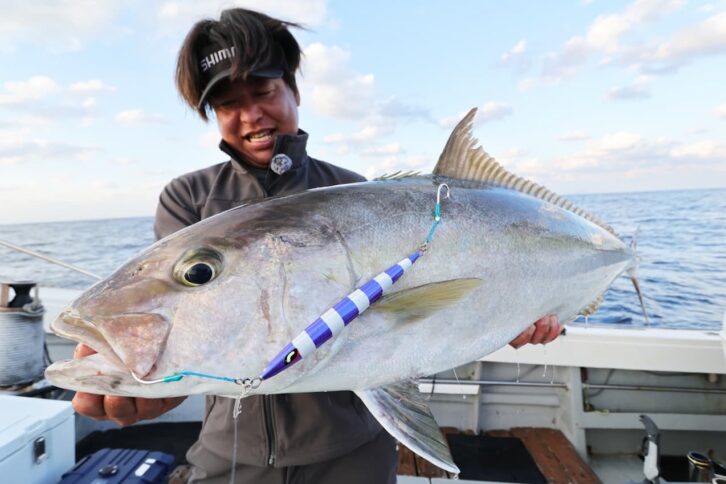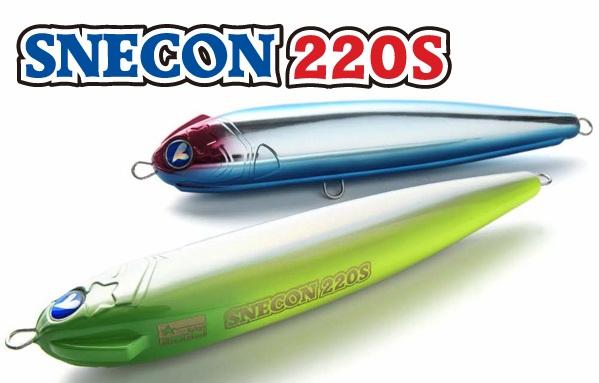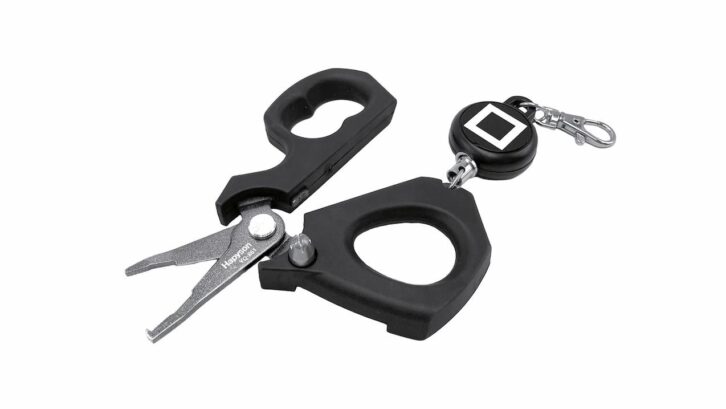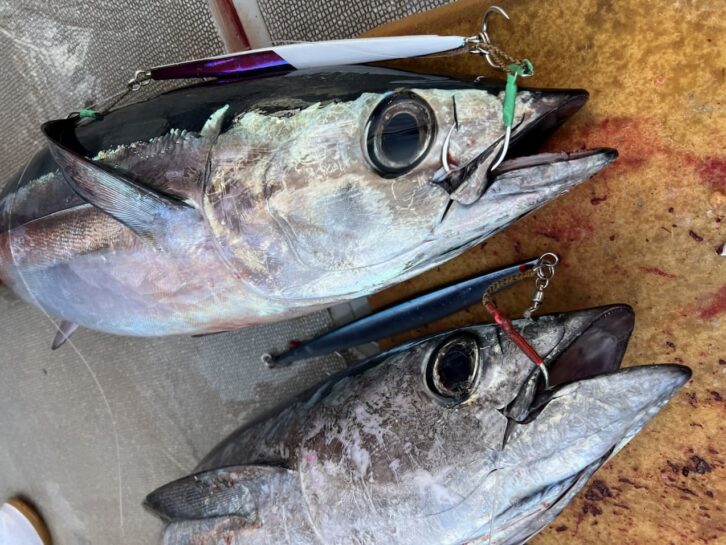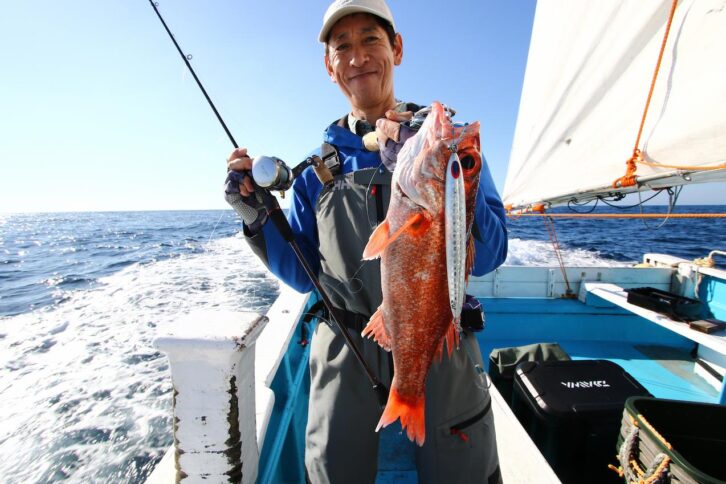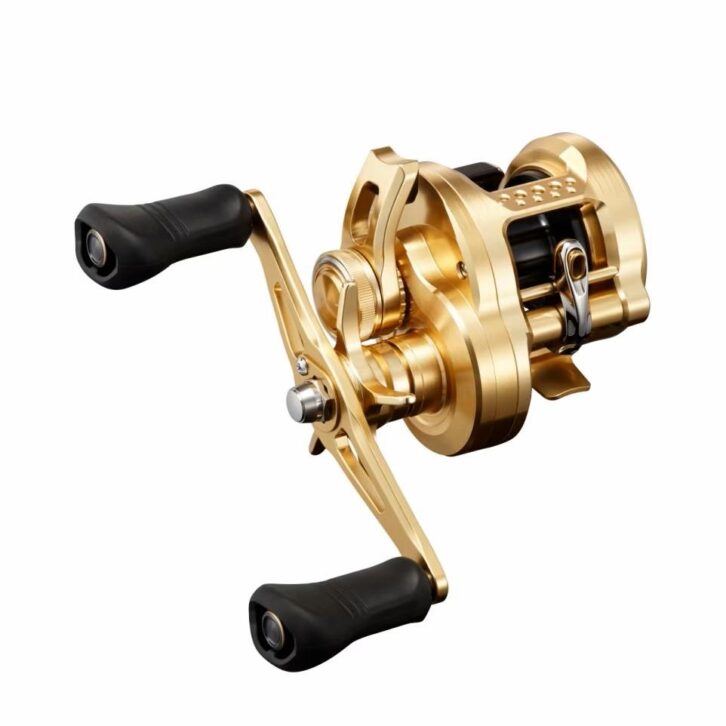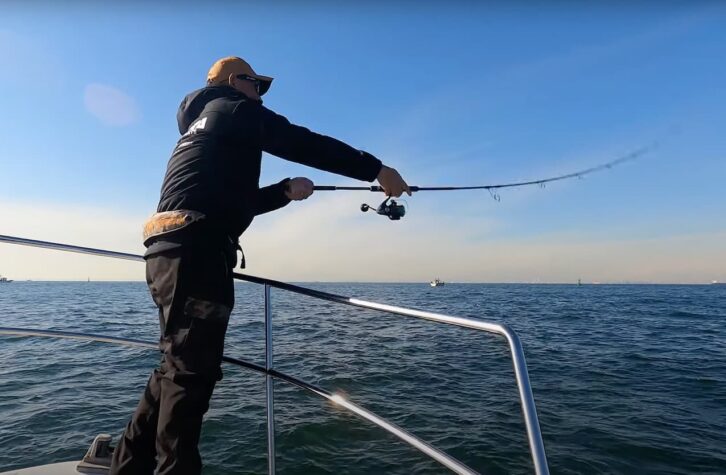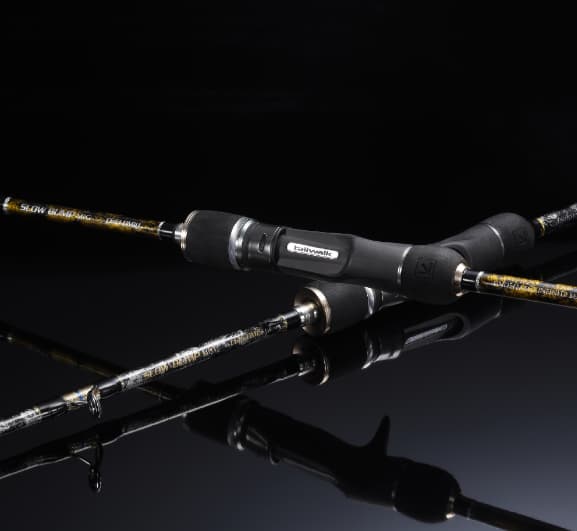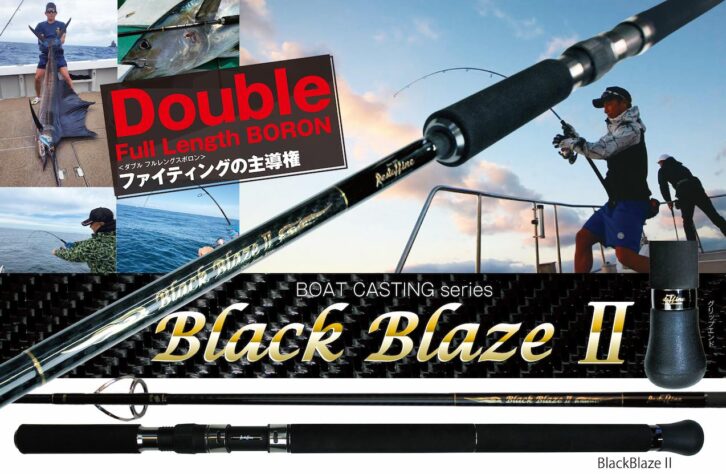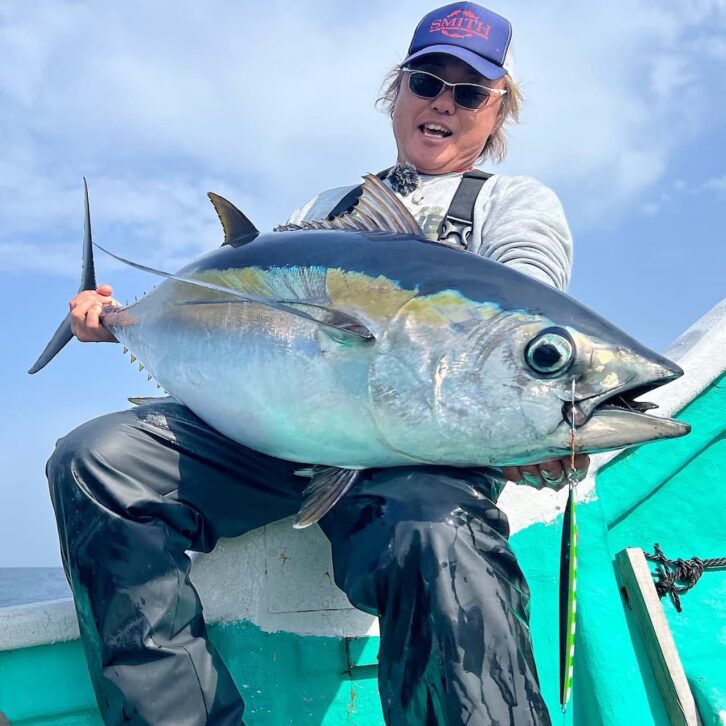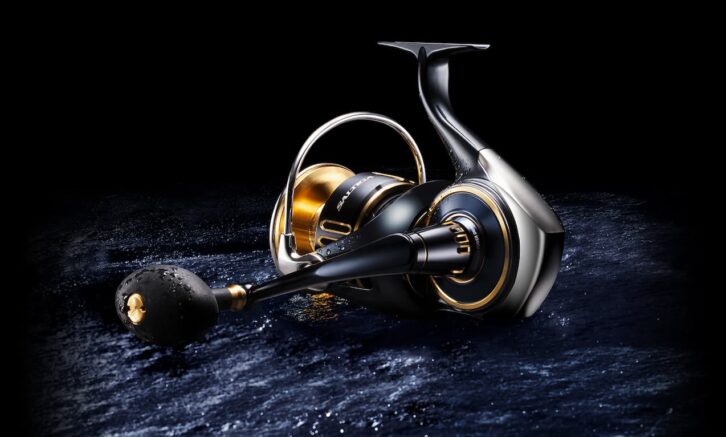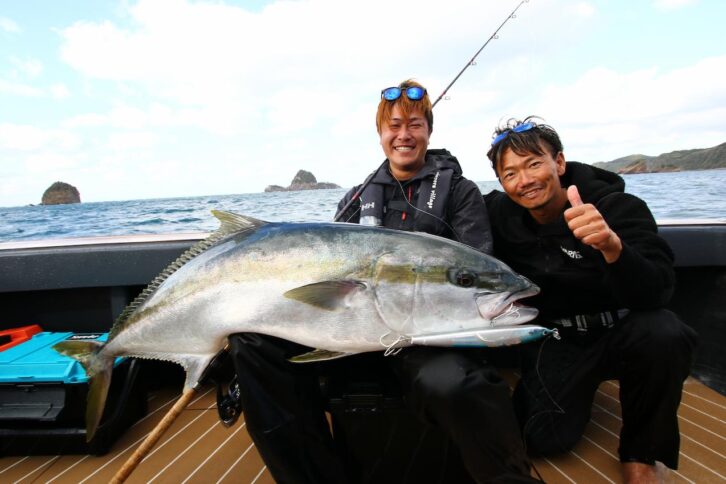PENN and Kei Hiramatsu's Big Fish Challenge
Summer to Autumn in the Sea Targeting yellowtail amberjack,greater amberjack and yellowfin tuna Jigging tackle selection in off southern Izu
Kei Hiramatsu, a professional staff member of Penn Reels and a lover of yellowtail amberjack, frequently visits waters such as Minami-Izu and Mikura island, where he makes boat expeditions from Izu, which is easily accessible from the Kanto area. The reason is that these Izu-based fishing areas have the potential for big one-shot big fish. Here is a detailed description of Kei Hiramatsu's tackle selection during a mid-October fishing trip off the southern coast of Izu.
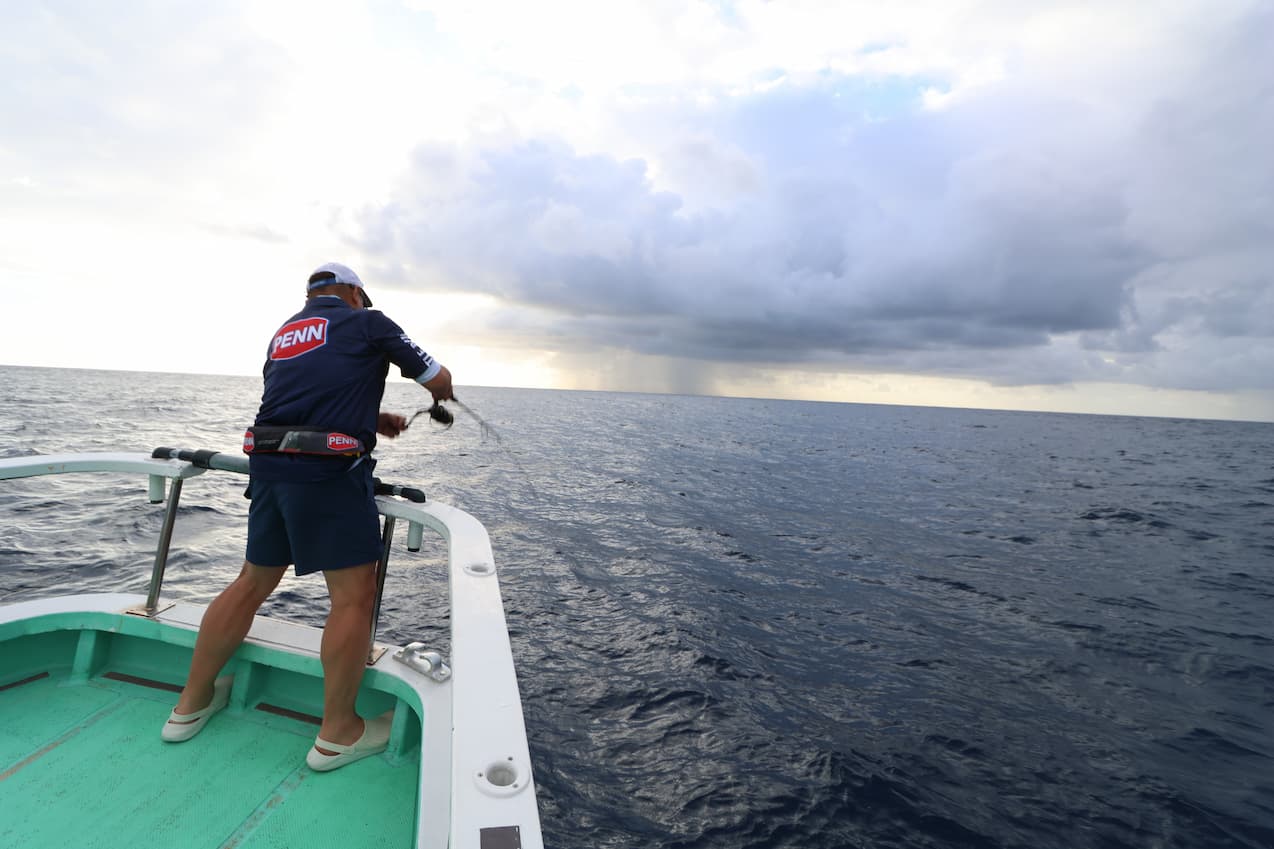
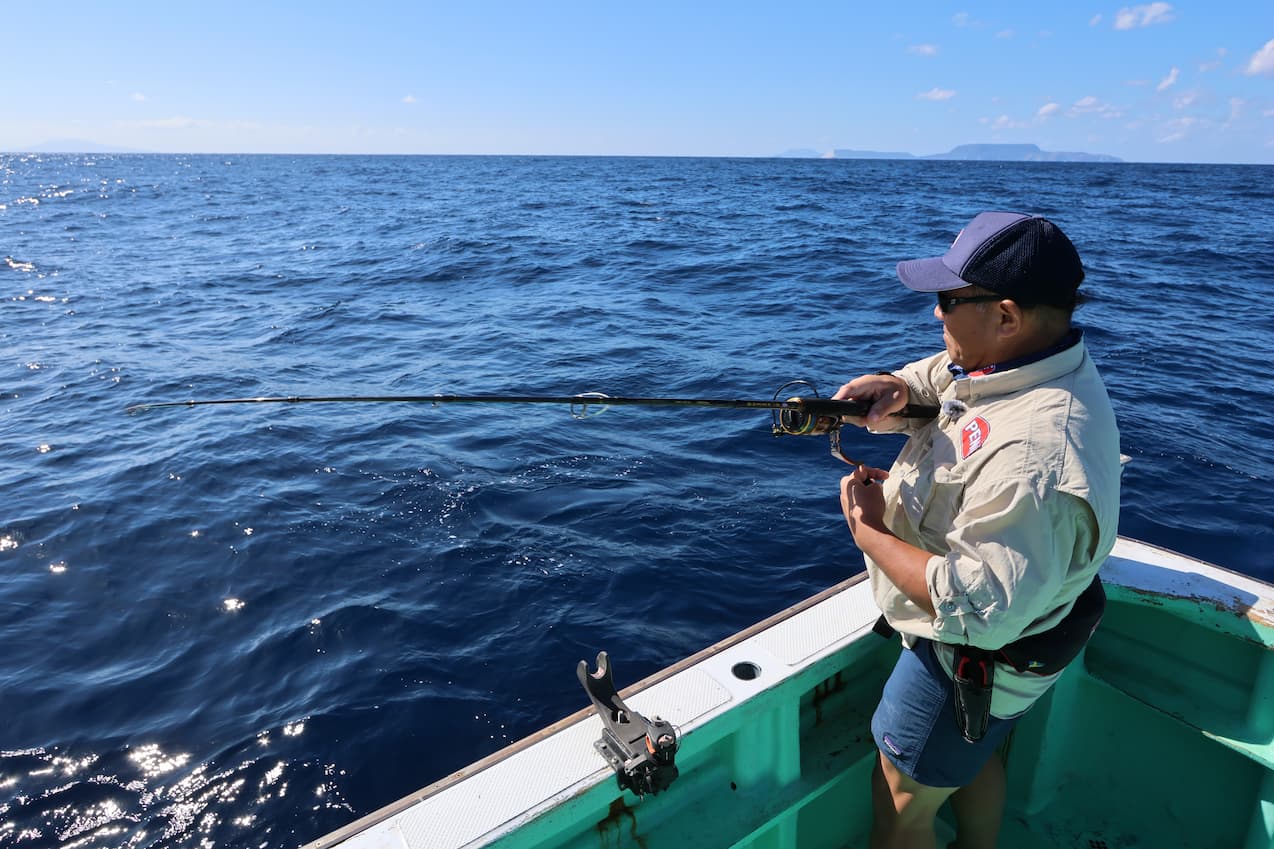
INDEX
- Movement of Large Bluefish from Summer to Autumn
- What rod did we prepare? Two models of Penn Slammer rods
- What you want to fish depends on what you want to fish for
- How to Fight the Hiramatsu Way, Making Full Use of the Reel Authority’s Performance
- Reasons for using PE #4 and 50lb leader
- Then suddenly a large fish hit. Details of the fight at that time
- Jig weights prepared for this summer and autumn offshore Izu-Minami
Movement of Large Bluefish from Summer to Autumn
The area around Toshijima and Niijima, known as the Izu Minami Offshore area, is an attractive field for anglers from the Kanto region, where they can target large and good-sized yellowtail amberjack,greater amberjack and yellowfin tuna, but it is not an easy place to catch them. However, it is also a place where it is not easy to catch fish. Kei Hiramatsu has tried his hand at fishing off the southern coast of Izu many times. And he has had a lot of success. I have seen his fishing trips and results many times, and it is clear that you need to be able to read the field in order to get good results. In “Kei Hiramatsu’s Offshore World vol. 23,” which we posted earlier, we asked Mr. Hiramatsu to report on his fishing trip, and here we would like to take a deeper look at the tackle he used on that trip.
First of all, how did he prepare the tackle based on the field conditions on the day of the fishing trip? He explained the situation as described in the previous articles in this series.
First of all, the area off the southern coast of Izu where we will be fishing this time is basically explored by jigging, but if yellowfin tuna are floating, casting tackle will be used. There is the option of sticking to jigging, but many people come prepared with casting tackle.”
Because of this, Mr. Hiramatsu also prepared both types of tackle. As a result, however, there were not many birds and no signs of fish on the water during the two days of fishing, so casting tackle did not come into play. However, if you are considering a fishing trip to this area, it would be better to prepare tackle for both.
So, what kind of jigging tackle do you need for the main course?
In preparing the jigging tackle for this trip, we started by trying to predict the behavior of the yellowtail and amberjack we were targeting.
The depth to be explored was generally around 100 meters. How are the bait fish moving in that water? This depends on the season. In autumn, when the water temperature has dropped, baits are widely scattered in the middle layer, and bluefish such as yellowtail catfish, yellowtail amberjack,
greater amberjack and yellowfin tuna are chasing them.
For a situation that produces a wide range of reactions, it is easy to catch fish by using the ‘line action’ I use when explaining how to fish, which is to probe widely with a diagonal trajectory. Another thing that was assumed was that the sea conditions were still summer. If the water temperature has not dropped, baits will gather near the bottom where the water temperature is stable. Naturally, yellowfin and greater amberjack will also be in the lower layers. Yellowfin are migrating in the middle and surface layers, but if you want to target yellowfin and amberjack, you should focus on the bottom. We will not move the jig extensively, but will search within a certain layer using “point movements” of the jig’s hovering and cranking motions. In this case, I couldn’t tell which was which until I actually stood in the field.
With this in mind, Hiramatsu prepared tackle and jigs that would allow him to explore both patterns.
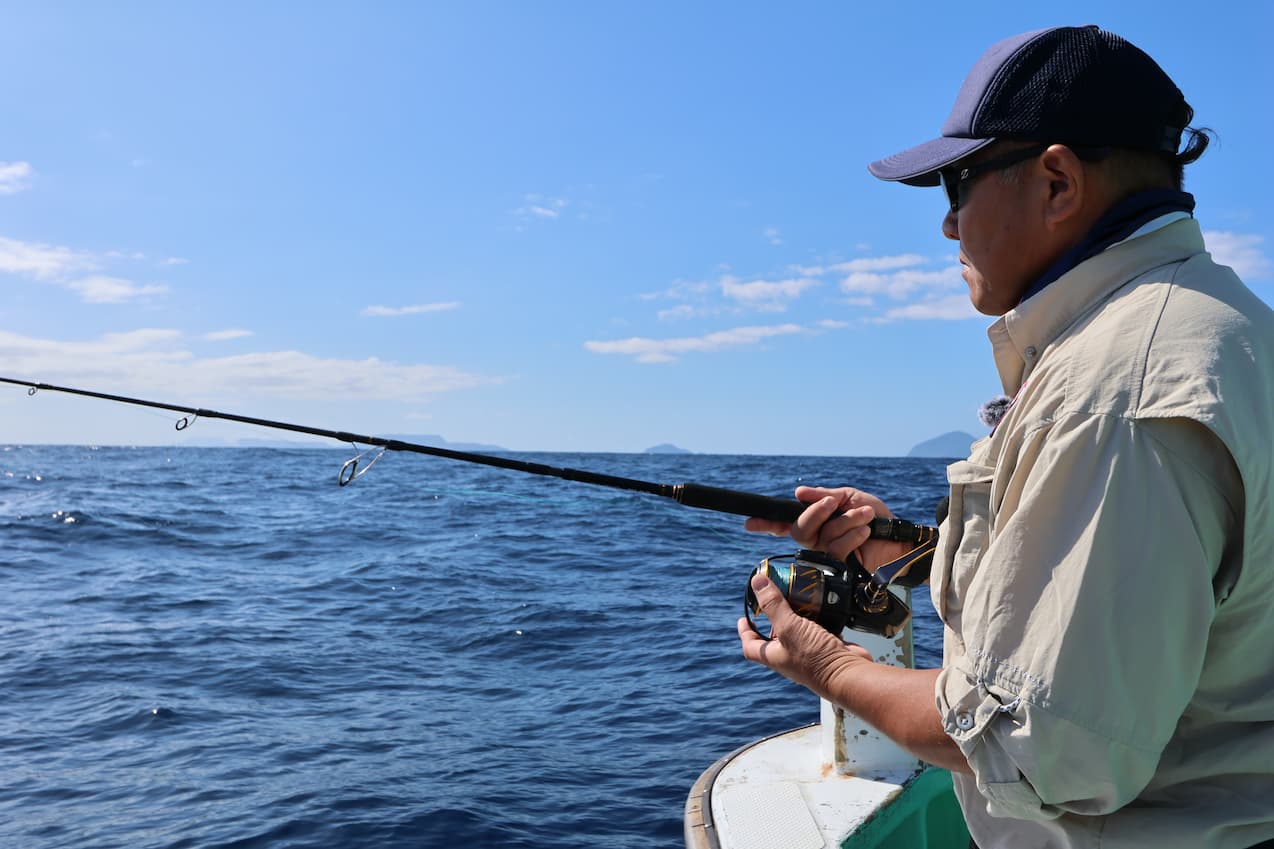
Before the fishing trip, he predicted how he would explore the area. Is it jigging or is there a possibility of casting? The rods and lures to be prepared will differ accordingly. The more you think about it, the more tempted you will be to bring all sorts of things, but it is important to narrow it down.

If you are jigging, you will be exploring the waters off southern Izu at a depth of around 100 meters. A rod that can move a jig firmly at that depth is naturally necessary.
What rod did we prepare? Two models of Penn Slammer rods
On this day, Mr. Hiramatsu brought two PENN Slammer rods for jigging: the 63M and 63ML.
Both rods are fast taper models; the 63M is quite firm in both butt and belly, while the 63ML, although fast taper, is built to bend in closer to the belly when bent in.
Hiramatsu’s own experience in jigging for Yellowtail has led him to create a tone that makes it easier to produce the jig action needed to hit Yellowtail.
First of all, the 63M was designed to give the jig a more impactful action. It is designed to move the jig quickly and significantly near the bottom to attract and stimulate the target and lead it to prey. The 63ML, on the other hand, is a model that moves jigs in a more aggressive manner. It is used when the jig is not moved in a big way, but is moved in a steady and steady manner. Although it was not used this time, it is ideal for when you want to slowly attract targets around fish reefs. Although these rods are used in opposite ways, we prepared both rods this time because we did not know the field conditions.
By the way, I should mention first that on the day we went fishing, the bait reaction was from the bottom to 20 meters all the time. It was still summer in the sea, with occasional reactions of yellowfin and Spanish mackerel in the middle layer.
In summer fishing like this, the bait is near the bottom, so I let the target feel the wave motion of the jig and search for the bait by hovering it between bites. For this reason, the taut 63M became my main rod this time.”
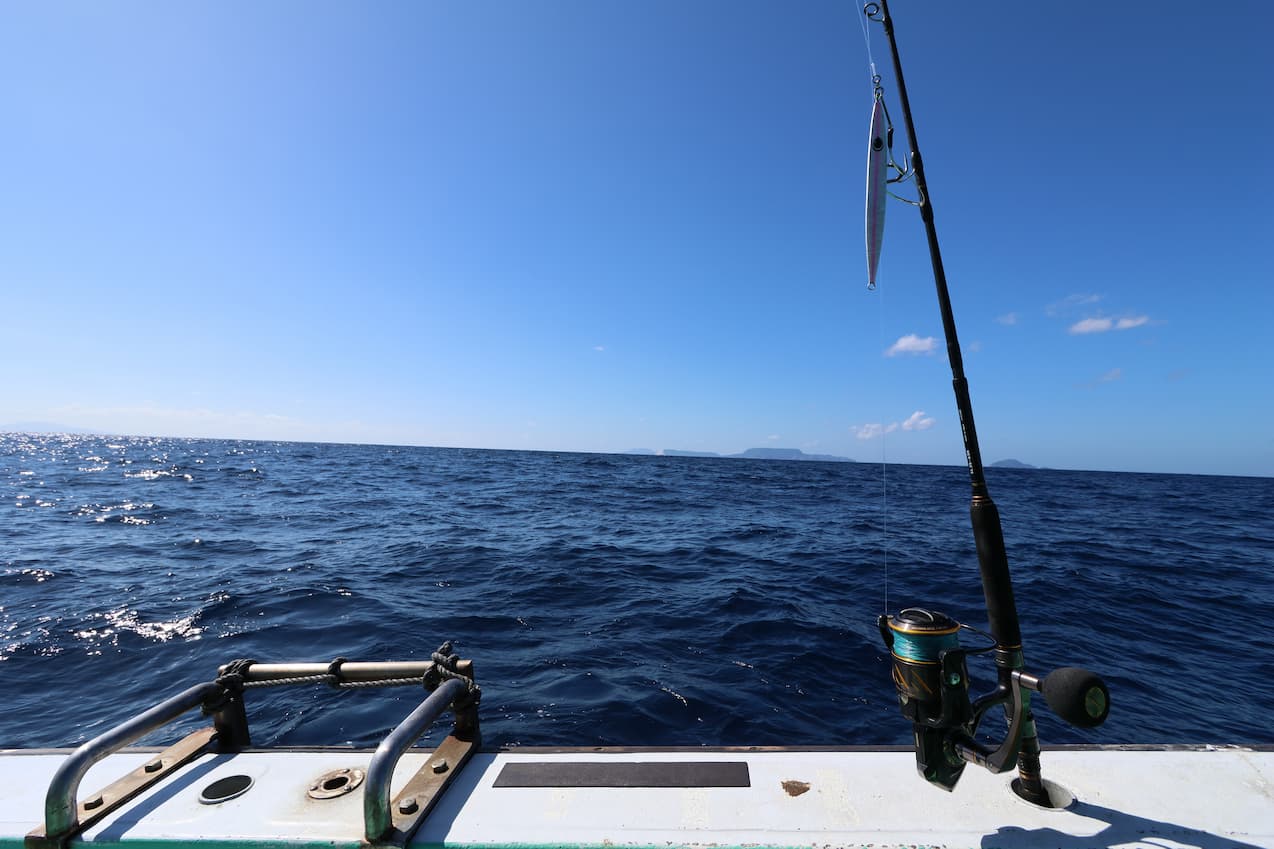
For rods, Mr. Hiramatsu brought his PENN Slammer rods, 63M and 63ML, which he supervised. Both rods have a fast taper, but considering the depth and current, we mainly used the 63M rod, which has more tension and makes the jig more agile. 63ML works well in shallow water, when you want to move the jig in a very fine, sticky motion.
When the jig reaches the bottom, the angler takes up the line slack and at the same time bounces the jig up and down with the rod, then lets the jig hover to create a pause for predation, and again lets it hover with a big jerk. Then, after three to five fine squirts, the jig is bounced up and hovered again, again loudly and quickly. This series of actions is performed within a depth range of 20 meters.
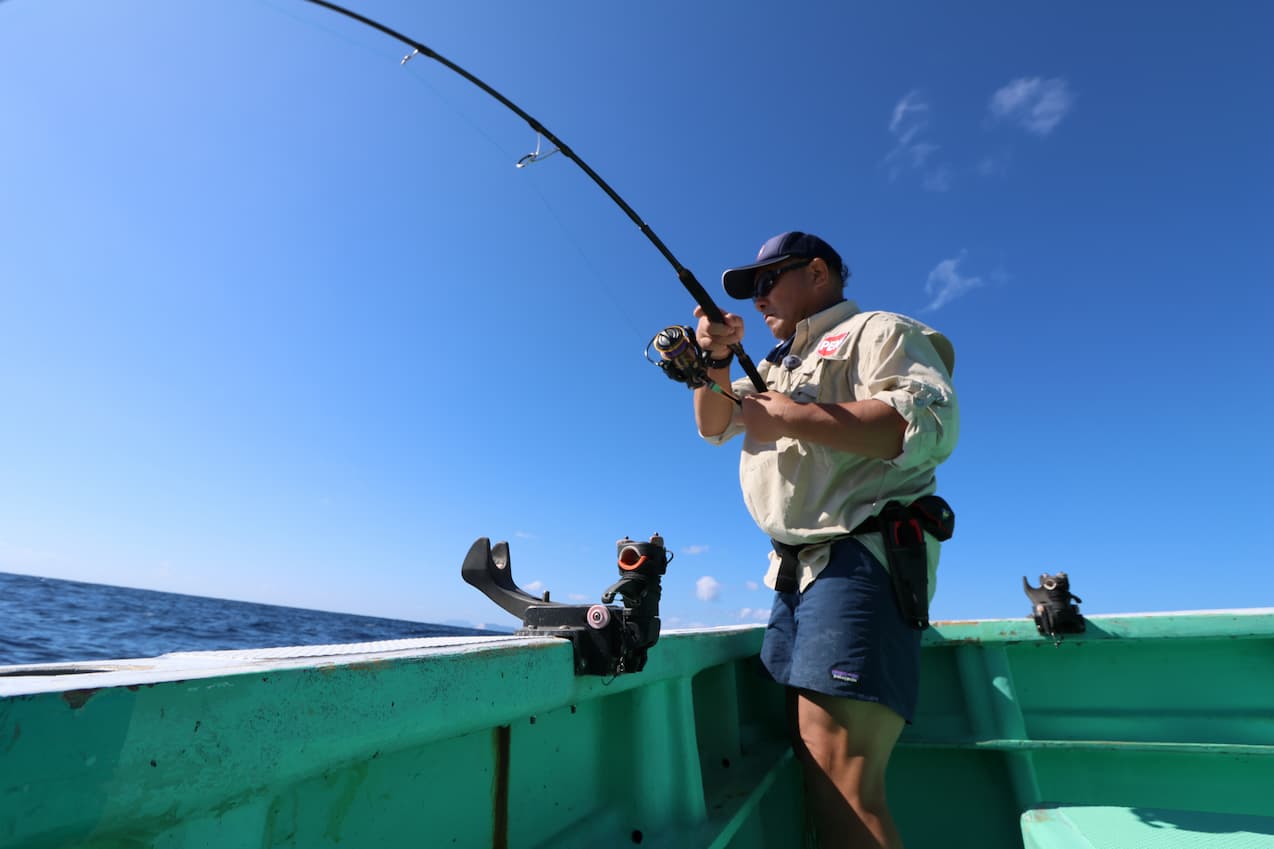
Mr. Hiramatsu’s jig action in the point action is an invitation to lead the jig to predation by shucking the rod big and quick, bouncing the jig up, and then hovering it afterward. The 63M was designed for this kind of action, and of course it can also be used for normal one-pitch cranking.
This time, we mainly used this kind of “point action” to search for fish, but if the fish are responding widely, we may use a “line action” to search for fish. What kind of tackle was used? He said he uses the 63M tackle.
The 63ML is suitable not only for fishing around fish reefs, but also for fishing in shallow water. For example, when you have to fish the bottom of the reefs, the 63ML is the best choice. In areas with deep water, such as this, the 63M is more suitable because it is taut and easy to move the jig around.
Incidentally, the jigging rods supervised by Mr. Hiramatsu, both his previous rods and the Slammer rod he is currently using, have a firm tension. Compared to today’s jigging rods that bend from the belly to move the jig naturally while absorbing excess movement of the jig, this rod has more tension.
I have been fishing for sunfish, greater amberjack, yellowtail, etc. in various places, and my fishing is to move the jig firmly and make the angler aware of the jig by its wave motion and movement, which leads to predation. This rod is the result of my many experience in this field.

PENN SLAMMER JIGGING product information
https://www.purefishing.jp/product/penn/rod/boat-rod/penn-slammer-jigging.html
PENN SLAMMER JIGGING product article
https://anglers-time.com/4757/
Buy it here
https://amzn.asia/d/hiXrWTq
What you want to fish depends on what you want to fish for
This time, the main method was to probe with “point movements,” but Mr. Hiramatsu also tried line movements along the way.
He said, “I also used the line action for a short while, because there was a possibility that the bait was spreading widely and that yellowfin were migrating. On the second day, a yellowfin tuna hit in the middle layer, and on the first day, other anglers were also getting yellowfin tuna in the middle layer. I could have tried to catch yellowfin tuna in the middle layer by using the line action, but I decided not to because I thought small yellowfin tuna would hit. In a situation like this, if we did not stick to targeting bluefin around the bottom, we would miss one chance. With that in mind, I focused mainly on the bottom area.”
On the first day on the boarding boat, the captain announced, “Try to probe widely,” in response to reactions that also appeared in the middle layer. This was because of the yellowfin tuna reaction. The captain said that yellowfin tuna were migrating together with yellowfin tuna and yellowtail amberjack near the bottom. Should we fish widely here or concentrate on the bottom? It depends on the fish you want to catch.
When there is a good tide at Mikurashima Island,” the captain said, ”you can sometimes find yellowfin tuna schools mixed with yellowtail and yellowtail amberjack. In such a case, you need to work the line. But in this situation, I didn’t think there would be any mixing, so I focused on the bottom.
Mr. Hiramatsu was also told by the captain about the recent success of Yellowtail fishing with the swimmers: “The yellowtail that are feeding on the swimmers are all centered on the bottom. That is why he searched thoroughly around the bottom without blurring the line.
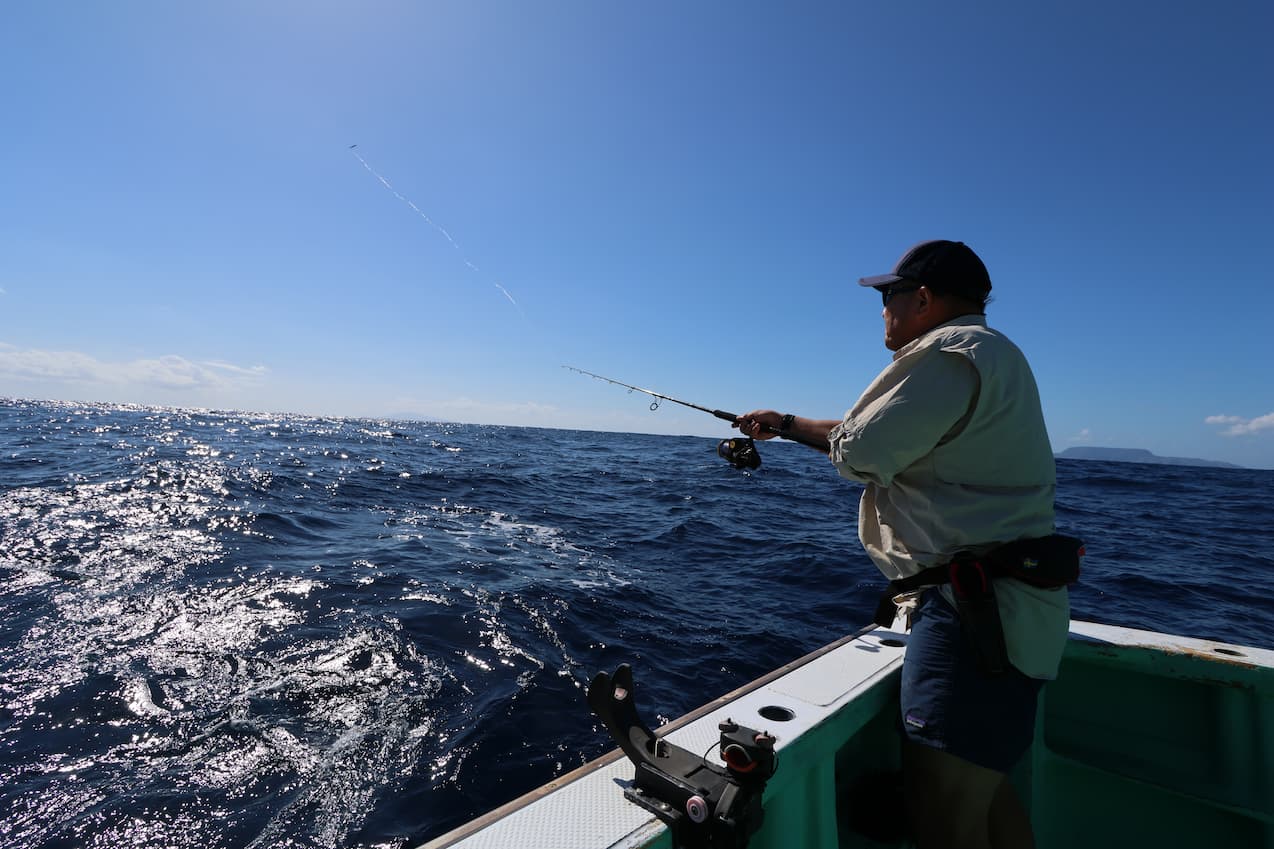
If the bait reaction is widespread, search widely by pulling diagonally. Although we did not have such a situation this time, it is important to know that such a pattern is usually followed from autumn, when we target sunfish, kampachi, and yellowfin tuna. Incidentally, Penn Slammer jigging rods can also be used for lightly throwing jigs.
How to Fight the Hiramatsu Way, Making Full Use of the Reel Authority’s Performance
The general idea is that a taut rod can manipulate a jig firmly. However, it is harder to fight with a taut rod than with a rod that bends. However, Mr. Hiramatsu has his own way to solve such a hard fight. That is his fighting style and the performance of his reels.
First of all, Mr. Hiramatsu does not use a power fight in which the rod is bent greatly after a hit. Instead, he holds the rod in a straight line and closes the gap between the angler and the target fish so as not to provoke the fish. When a fish is strongly stimulated, it reverses and tries to escape with great force. Therefore, do not apply pressure by bending the rod, and do not use a strong drag.
First of all, if the drag is set too strongly, the fish may pop as soon as it hits. So we set the initial setting at about 4.5 kg. Once hooked, I wait for the fish to weaken by using the drag performance of the reel, rather than putting pressure on the fish by bending the rod too far to stop it.
In Hiramatsu’s style of fighting, the performance of the reel is essential for taking the lead in a fight with a fish.
Currently, I use the Penn Authority 6500 reel, which is very rigid,” Hiramatsu said. And this reel has a reliable slammer drag, which has been proven in previous fights with fish. I have been in love with the performance of this drag on my previous Slammer reels, but now that I am using the Authority, I have come to realize that the strength of the body is the key to maximizing the benefits of the Slammer drag. I feel that the stability of the drag has increased. I believe that the strength of the Authority’s body does not mean that you can reel it in and bring in fish, but rather that the strength of the body allows you to fight by relying on the drag. Of course, Authority’s reeling torque and reeling sensitivity are overwhelming compared to previous models.”
Mr. Hiramatsu usually uses the normal gear model of the Authority, but this time he selected the HS model.
In shallow water, I have no problem using the 6500 normal model (99 cm per turn of the handle), but this time I selected the 6500 HS (121 cm per turn of the handle) because we were in deep water at around 100 m. This is because the line swells quickly with the tide. The reason for this is to quickly remove the dandruff caused by the tide and to move the jig firmly even in deep water. I also wanted to be able to quickly reel in the reel to respond to the fish’s movements.
Incidentally, the No. 6500 has the line capacity to hold 300 m of No. 4 PE, which Hiramatsu usually uses to target yellowtail and greater amberjack.
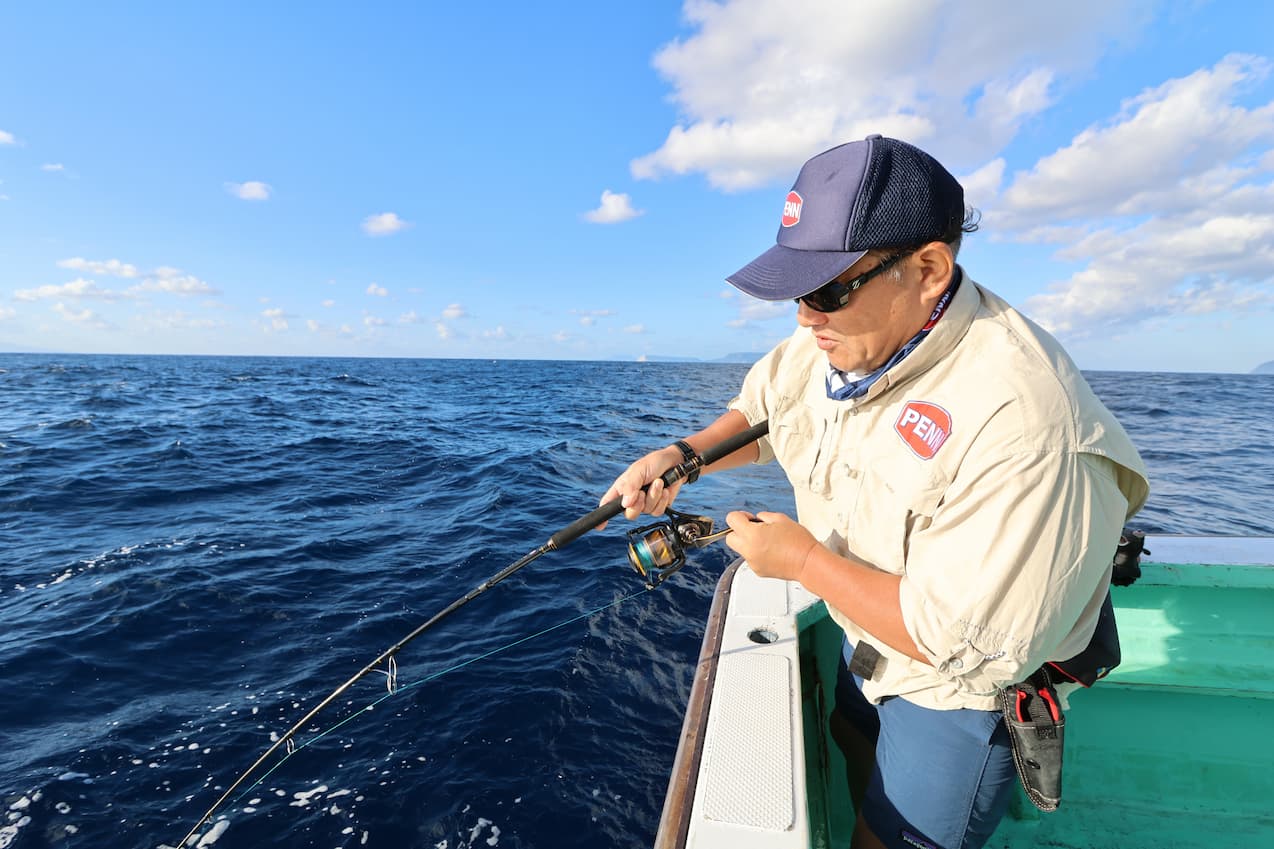
After a hit, he fights the fish by letting it move, rather than applying pressure by forcing the rod to bend. This is why Mr. Hiramatsu chooses PENN Authority for this kind of fight.

Fighting with faith in the performance of the Authority’s shielded slammer drag. This drag, equipped with a large-diameter washer DuraDrag, distributes the force by applying pressure from above and below the spool. This ensures smooth, consistent line release.
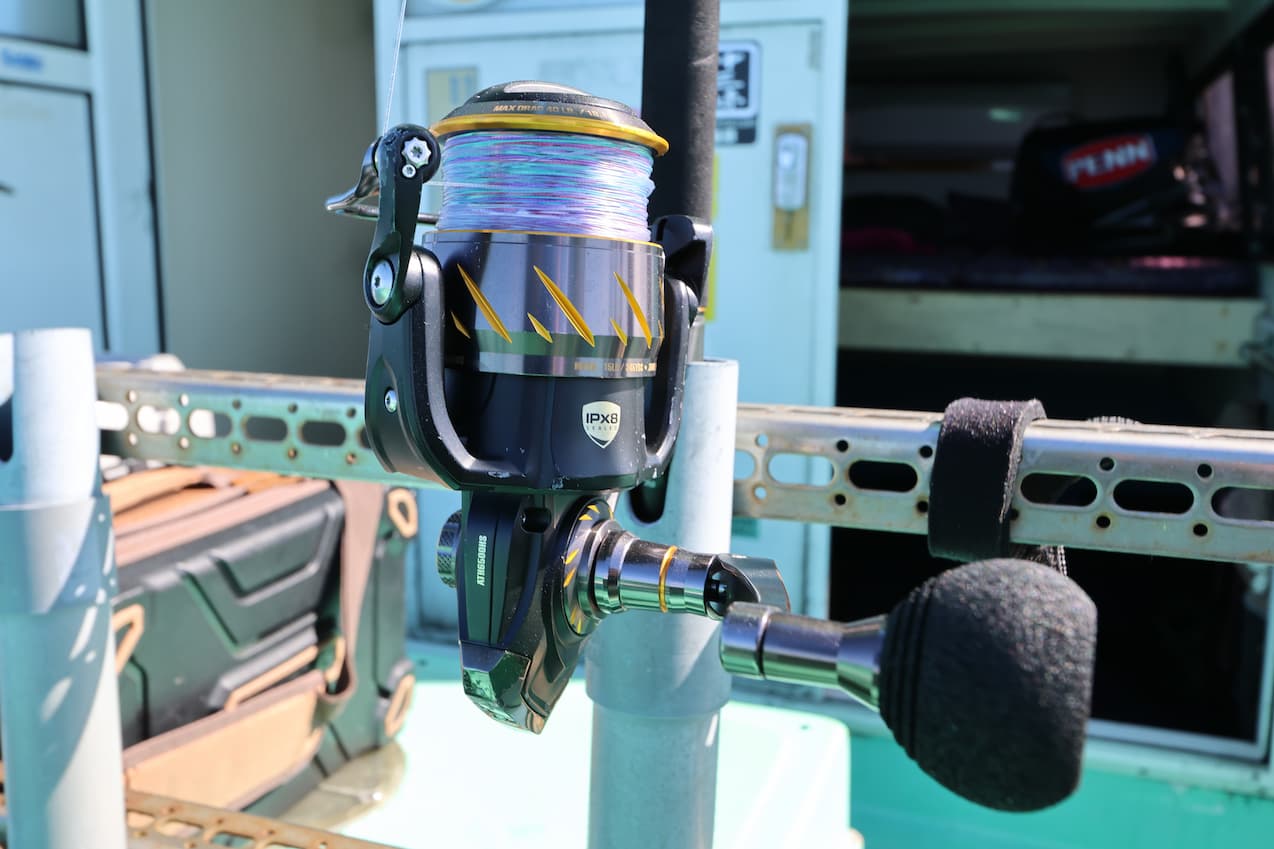
The PENN Authority has an IPX8 rating for water resistance. This means that it will not be flooded even if it is submerged underwater for a certain period of time and the handle is turned. Trouble-free performance supports anglers.
PENN Authority Product Information
PENN Authority Product Information
https://www.purefishing.jp/product/penn/sp/authority.html
Product introduction video
Reasons for using PE #4 and 50lb leader
Mr. Hiramatsu always selects the No. 6500 when jigging for yellowtail and greater amberjack.
I feel that using No. 6500 line with No. 4 PE is a good balance.
In choosing a line, strength is one guide, but not the only one, according to Hiramatsu.
When targeting yellowtail or greater amberjack, I drop a 200 g jig on the first cast. This is to get an idea of what is going on in the water. I try to know which way the tide is running and whether there is a tide line or not. At that time, I always went with PE #4. So I don’t choose No. 3 because the water is shallow or the fish are small, but No. 4 PE. Also, because I have been using No. 4 PE for a long time, I know how far I can push myself without breaking during the fight when I hook a fish. It is not that the No. 4 PE won’t break, but that I have confidence that I know how to use No. 4 PE.
The same goes for the 50-lb leader. He sometimes uses a 60-lb leader when the fishing is very rough, but he uses a 50-lb fluorocarbon leader as a base. However, he often changes the length of the leader. The basic length is 3 or 4 fathoms, but when fishing deep, he uses a longer length, depending on the fish’s activity.
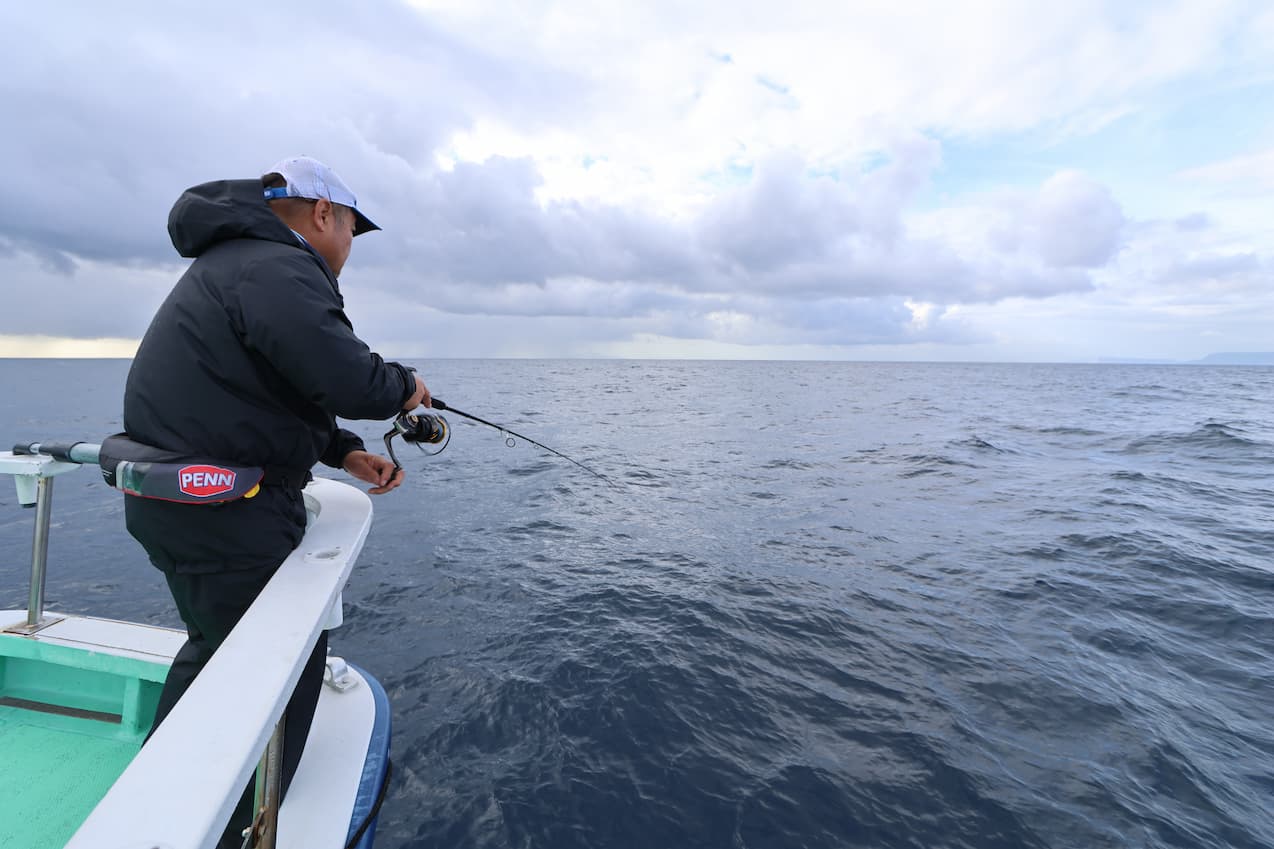
When targeting yellowtail, greater amberjack, and yellowfin tuna, always use PE No. 4. He does not drop down to No. 3 due to small fish, fast tide, shallow water, etc. This is because we know the best performance of PE No. 4 from our jigging experience.
Then suddenly a large fish hit. Details of the fight at that time
On the first day of fishing, the first point I entered in the morning was at 80 meters, and the next point was at 70 meters. The next point we entered was at 70 m. The bottom tide was not so strong. The bottom tide was not so strong. Therefore, Mr. Hiramatsu used the same 200g Gammy he had put in at the beginning. The captain told him that there were baits on the bottom. Then, he entered the 90-meter range. The first cast, when he dropped the jig, he felt that the conditions were almost the same in the sea at this depth. After landing on the bottom, he first gave a big shove to get some line slack and at the same time moved the jig quickly and widely, then hovered the jig.
I hovered, and the moment it fell from its head, it came on. It was the first movement of the fish and I hooked it at the same time. At that time, depending on the conditions of the point where the fish hit, I thought the location was not a very undulating point, so I let the fish run to some extent, trusting the performance of the reel’s drag, rather than bending the rod to apply pressure. The line went out about 20 meters. Then, trusting in the performance of the drag, I weakened the opponent firmly. After that, I confirmed that the drag had weakened from the initial momentum, and I tightened the drag slightly from 4.5 kg to 6 kg, lifted, and pumped. It was smooth pumping after it had weakened. The first size kampachi that came to the surface was the first size kampachi in this area. It is a size that is not easy to catch. I was very happy to catch one.”
Mr. Hiramatsu hooked a fish just as he had hoped. And the fight was steady. It was a fish that made him realize that he had caught it, not that he had caught it.


A good-sized kanpachi that was caught according to the target. The fish fought steadily and was brought in smoothly. The tackle balance was well balanced, and the angler knew the performance of the tool, so he was able to take full advantage of its performance. It is a size that is hard to find off the southern coast of Izu.
Jig weights prepared for this summer and autumn offshore Izu-Minami
Lastly, I asked about jig preparations. Jigs are generally selected based on depth, tide speed, boat speed, bait size, and other factors.
The jigs we prepared this time ranged from 180 to 310 grams. In fact, I used jigs weighing 280g and 310g this time. However, there were few times when we used them. On the second day when we were on the same boat with the swimmers, there were times when the wind was strong, so we included heavier jigs to probe the bottom more carefully, but most of the situations could be explored well with 200g. The bottom tide was in effect, but it was not a very strong bottom tide, and the up-current was not too strong, so I was able to fish with 200g without any difficulty. If the up-current was strong or the two-piece tide was too hard, I would use 280g or 310g.
He also said he sometimes uses 180g when the bait is responding over a wide area and he needs to probe widely with line movements. With that in mind, he prepares 180-310g. He said that the jig selection weight range this time was wide because it was the time of the switch between summer and fall. He said that if the season is clear, he can narrow it down.
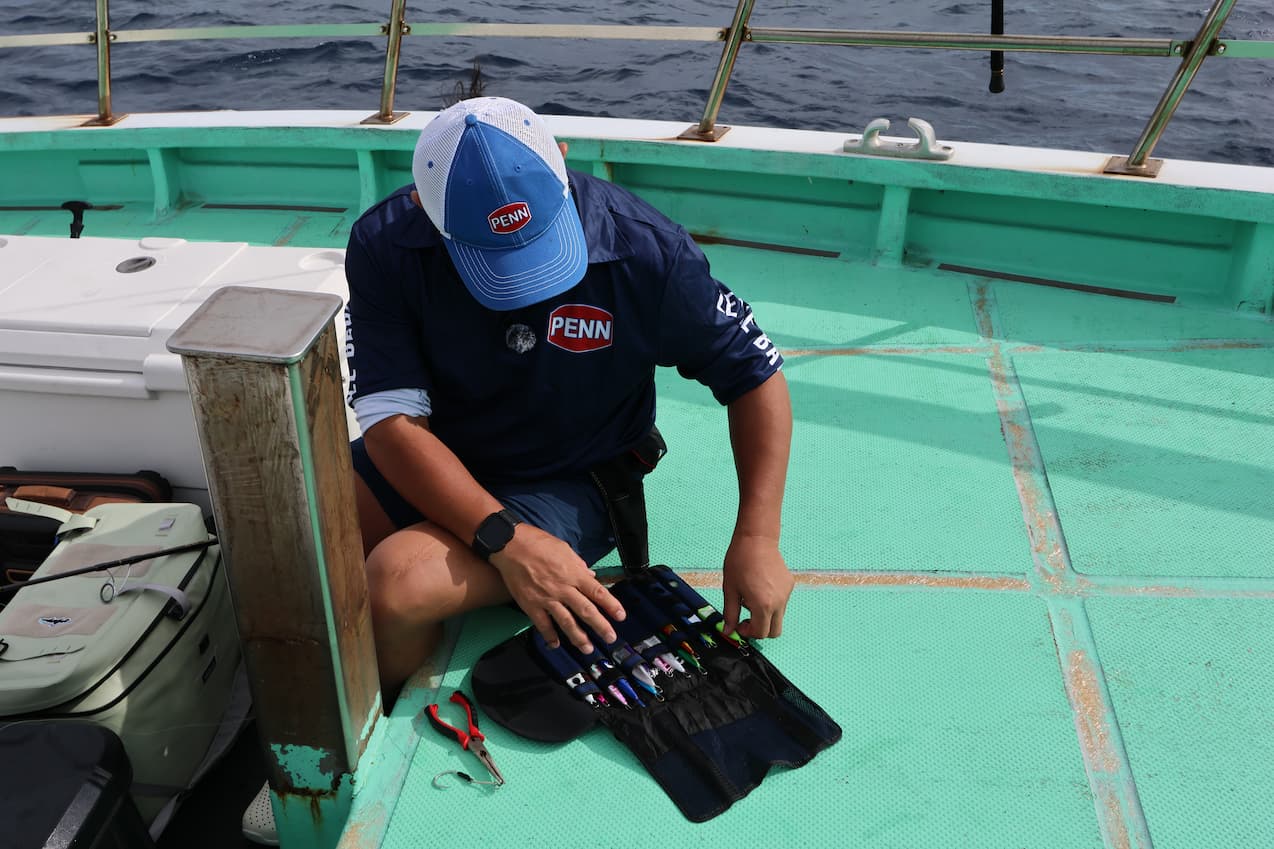
Jigs can usually be narrowed down, but this time, since it was the time of the season changeover, he prepared a wider range of weights. Incidentally, the Slammer Jigging Rod 63M can handle a wide range of jig weights.
Whenever Mr. Hiramatsu goes to an area, he first thoroughly anticipates the field, carefully observes it while fishing, and then attacks accordingly. He cannot achieve consistent fishing results simply by shaking his rod in the dark. What is necessary for such a strategy is a rod that can control a jig as desired according to the situation, and a tackle balance and tackle that you are familiar with. Mr. Hiramatsu proudly recommends PENN rods and reels. We hope you will check them out once again.
Jigging tackle
Rod: Penn Slammer SLJS-63M, 63ML
Reel: PENN Authority 6500HS
Line & Leader: Sunline Infinitive X8 #4 + Tsunagito 50lb
Lure: K-FLAT Gummy 200g-310g, Gummy-fat 250g
KEI Jig 235g KEI Jig Sharp 260g
Casting tackle (model supervised by Kei Hiramatsu)
Rod: PENN Slammer PHSS-71M, PHSS-71LMH
Reel: PENN Authority 8500HS
PENN Slammer DX 8500
Line & Leader: Sunline X8 Full Contact #8 & Nylon shock leader 130lb
Lure: Legrand Tango 190
PENN SLAMMR CASTING
https://www.purefishing.jp/product/penn/rod/boat-rod/penn-slammer-casting.html
Buy it here
https://amzn.asia/d/4LgRicc


